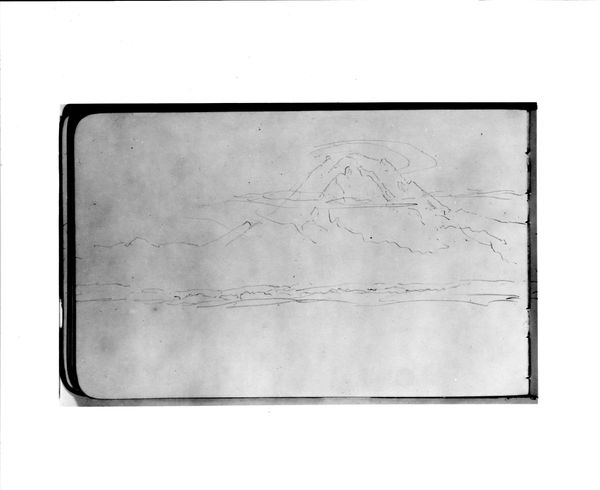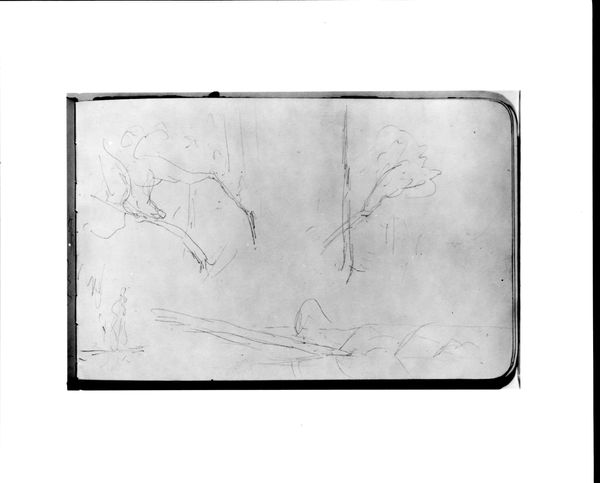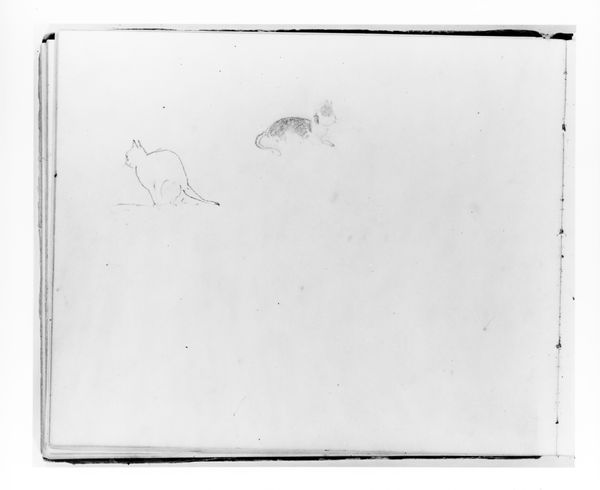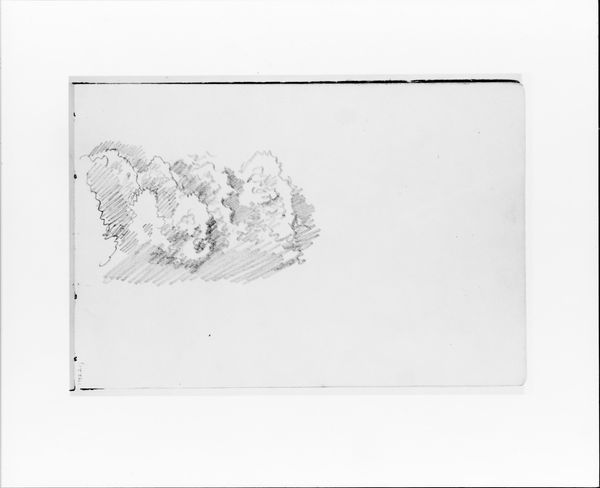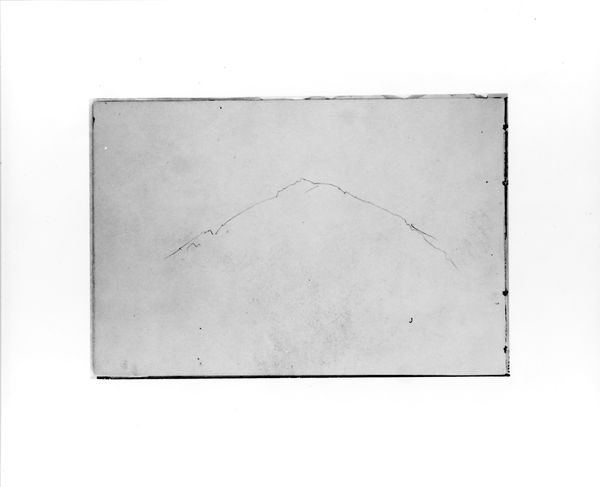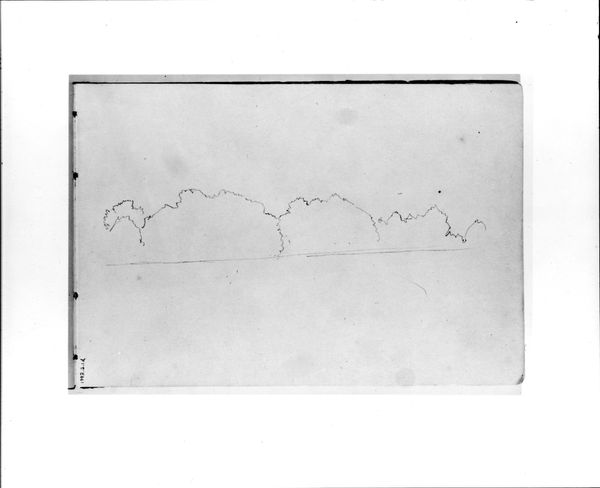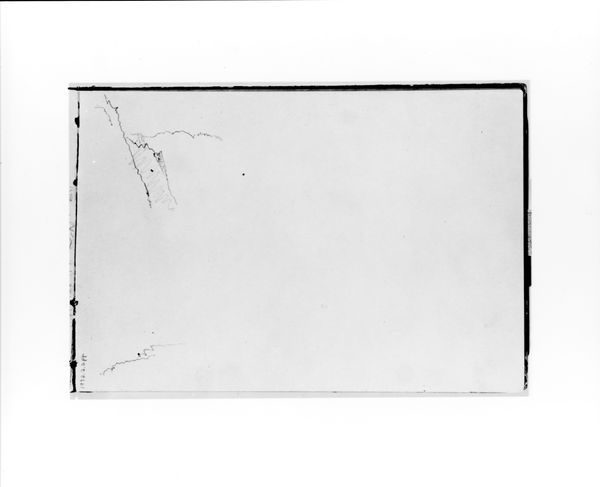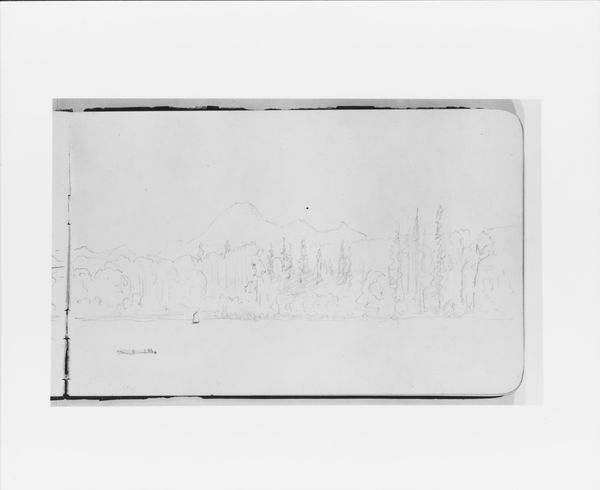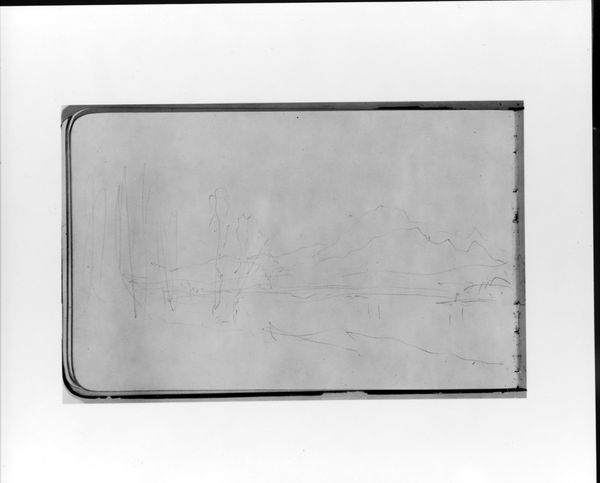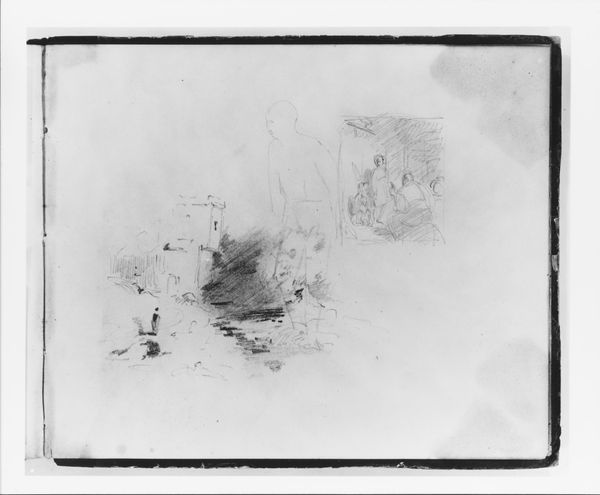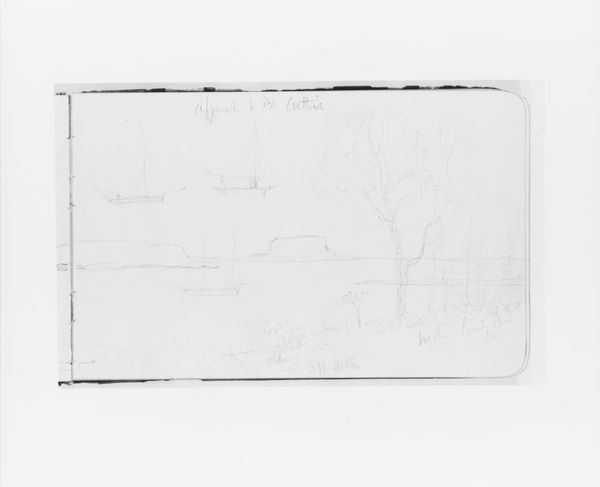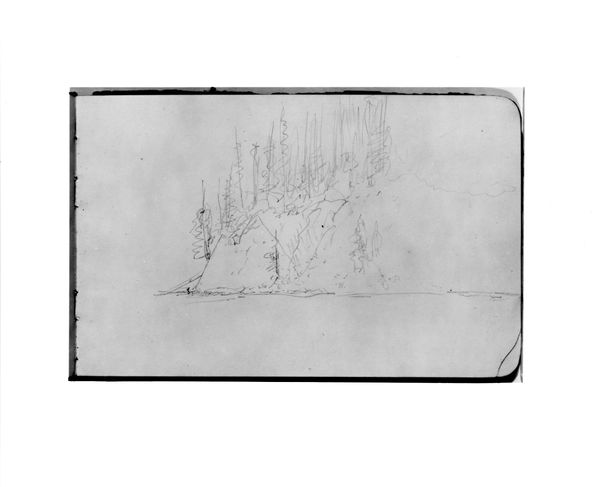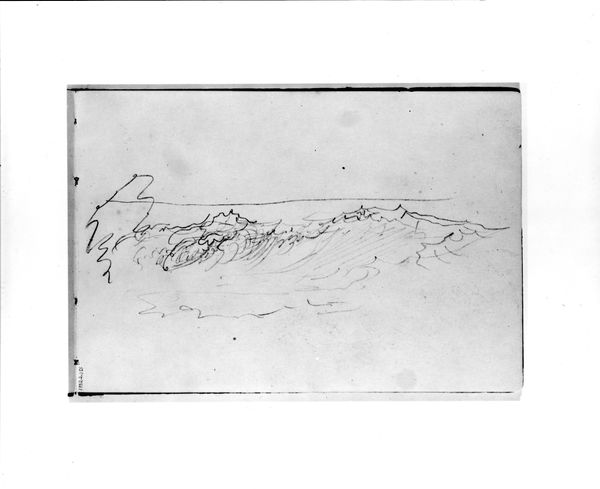
Dimensions: 4 3/4 x 7 3/4 in. (12.1 x 19.7 cm)
Copyright: Public Domain
Editor: Here we have Albert Bierstadt's "Mountain Sketch" from 1890, a graphite drawing. It's fascinating how much atmosphere he creates with so few lines. What do you see in this piece? Curator: I see a romanticized vision of the American West, typical of the Hudson River School, but one that simultaneously conceals the complexities of westward expansion. This sketch, though seemingly innocent, participates in a broader narrative of dispossession and environmental exploitation. Editor: Dispossession? Could you elaborate? Curator: The 'untouched' landscapes that Bierstadt and his contemporaries painted were, of course, not empty. They were Indigenous homelands. By omitting any sign of native presence, these artists helped to promote the myth of a vacant wilderness, ready for white settlement and resource extraction. What effect does the starkness of the monochrome have on you? Editor: I guess I hadn’t considered the implications of what’s *not* shown. The lack of color maybe contributes to that idealized feeling— almost like a dream of the land, not the reality. Curator: Precisely. And this "dream" had very real consequences. Consider the socio-political context. These images bolstered Manifest Destiny, the belief that American settlers were destined to expand across the continent. Art became a tool in shaping public perception and justifying territorial expansion. It's crucial to view art through that critical lens. Editor: So it's about uncovering these hidden layers, understanding the art as part of a larger power structure? Curator: Absolutely. It is about dismantling the idea of art existing in a vacuum, instead connecting it to its role within political, economic, and social forces at play during its creation. What do you think knowing this helps us understand about this sketch and Bierstadt as an artist? Editor: It makes me question the whole idea of "pristine" wilderness. Thanks, that really changed my perspective. Curator: And, hopefully, it opens doors to continually question the power dynamics embedded within visual culture, even today.
Comments
No comments
Be the first to comment and join the conversation on the ultimate creative platform.
